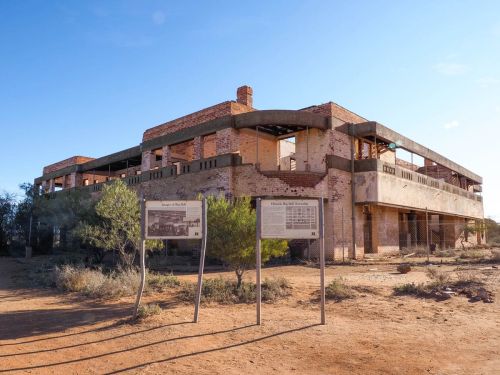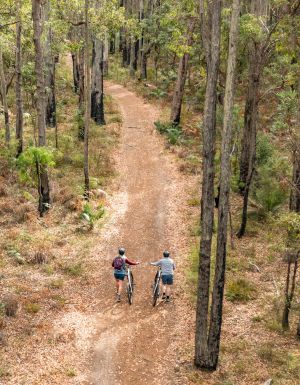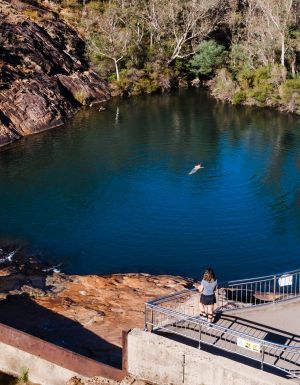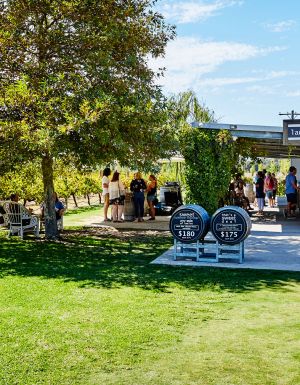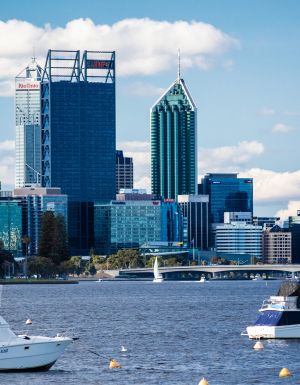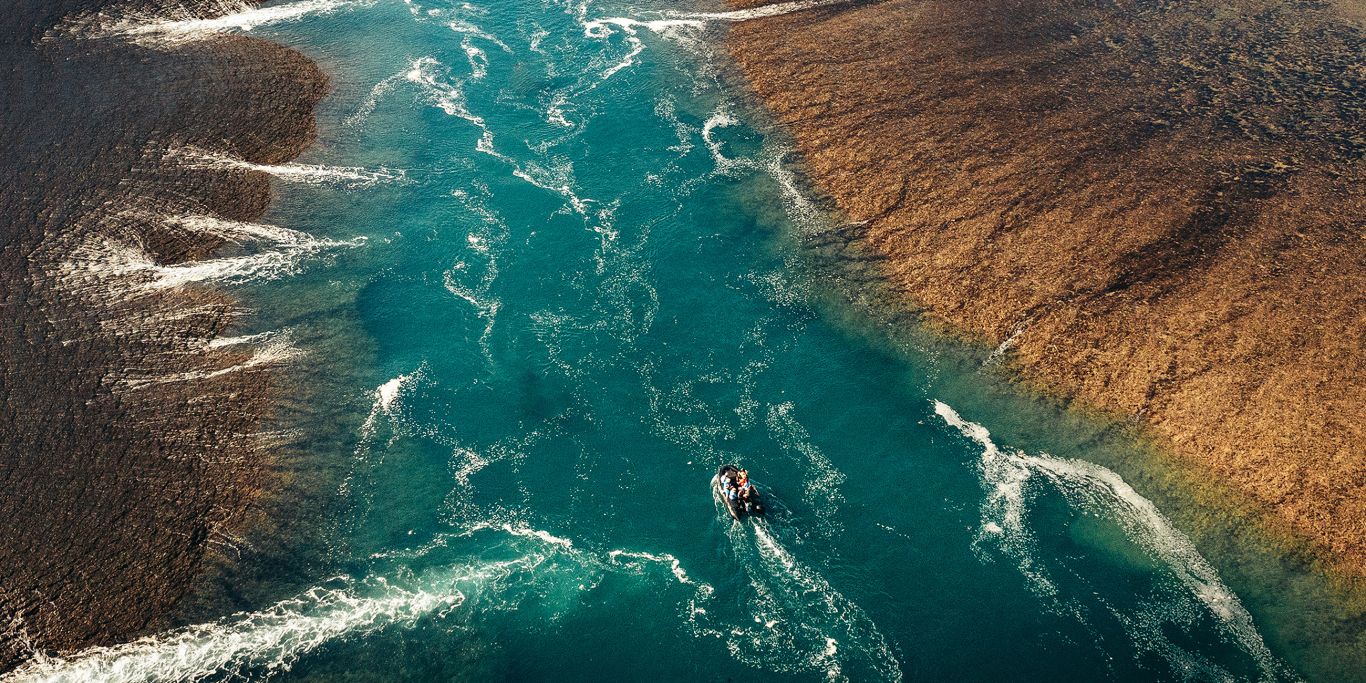If you look hard enough (and drive far enough), you can still find the quiet ghosts of Western Australia’s old boom towns hiding in the outback.
For much of the late 19th and early 20th centuries, Western Australia‘s vast outback was filled with mining and pearling boom towns that popped up in the red dirt landscape like the region’s famed wildflowers.
But, unlike wildflowers, which disappear as soon as the seasons change, many of the towns were lost to faded fortunes and mine closures, their communities scattered to the wind, forced to leave behind everything they couldn’t carry.
While the majority of these former settlements have long surrendered to the sands of time, those that remain are known as ghost towns, their ruined buildings and rusty cars filled with the shadows of the people who once lived there (you’ll find it’s a familiar tale across Australia’s regions, and Tasmania’s ghost towns are just as fascinating).
Dotted across the outback, WA’s best ghost towns aren’t the easiest places to get to, but brave the dusty drives and you’ll be rewarded; not only with a trip down memory lane to an equal parts eerie and intriguing life-size time capsule – but also with a reminder of the fate that may one day await more of Australia’s rural towns, whose once-thriving streets are emptier than ever.
1. Gwalia
Hiding out in the northwestern Goldfields, Gwalia is one of the most interesting ghost towns in Western Australia. This is partially due to its connection with geologist-turned-US president, Herbert Hoover – who was manager of the Sons of Gwalia mine when it opened in 1898 – but mostly thanks to the incredible preservation efforts that have been ongoing since the 70s.

Before then, Gwalia was the epitome of a boom town, with a steam tram, shops, lodging houses, community centre, swimming pool and state-owned hotel. However, most of the 1200 residents – many of whom Hoover recruited from Italy to lower labour costs – were living in cobbled-together homes made from wood, corrugated iron offcuts and hessian sacks.

In the end, a series of serious mining accidents sealed the town’s fate, with most of the community leaving within hours of the mine closing its doors in 1963.

Although the few residents left banded together to preserve the town as best they could, including opening the Gwalia Museum in the old mine manager’s offices, it was ultimately the re-opening of the mine in 1983 that changed Gwalia’s fortunes yet again. It provided a much-needed injection of funds to relocate and preserve the old miner’s cottages from the ever-expanding pit, and, in doing so, created one of the best outback attractions in WA.

Highlights
There are more than 30 buildings in Gwalia to explore, as well as the lovingly restored Herbert Hoover house and the Gwalia Visitor Centre and cafe.

Travellers should give themselves a good few hours to explore the town, most of which was returned to its impressive just-abandoned status as part of an “adopt-a-cottage" scheme in celebration of Gwalia’s 100-year anniversary.

Visitors can also combine visiting Gwalia with some of the other highlights on the Golden Quest Discovery Trail , including the eerie statues of Lake Ballard, Menzies and the nearby ghost town of Kookynie.

How to get there
Gwalia is located 829 kilometres northeast of Perth, 236 kilometres north of Kalgoorlie-Boulder and 4 kilometres south of Leonora.

Accommodation
Travellers can stay on site at the Hoover House B&B or in a self-contained RV. Leonora also has a caravan park and a handful of other accommodation options.

2. Kookynie
These days, Kookynie is what is known as a living ghost town, with more tumble-down homes and rusting-away cars than residents. Although the town has been continuously inhabited since 1898, the community now numbers just 14 including Willie the horse ; whose antics alone have done wonders to put this crumbling ghost town back on the map.

While Kooyknie started life off strong, with over 3500 residents (and just as many blow-ins) at its peak in 1907, just three years later, the cracks were starting to show. Although the mine limped on until the 1920s, most people left long before that, their abandoned homes and cars already turning to dust under the red-hot outback sun.

As well as the rustic ruins, the major draw to the town is Kookynie’s Grand Hotel , which, incidentally, is Willie’s main hangout spot. It’s also an ideal stop to fuel up with food, drink and stories about the (g)olden days – when Kookynie was home to another 10 hotels, a racecourse, a brewery, banks, bakeries, blacksmiths, jewellers, photographers, confectioners, hospital, post and telegraph office, and even seven brass bands.

Highlights
With little restoration, Kookynie’s historic buildings have definitely seen better days – aside from the Grand Hotel, of course, which is doing remarkably well considering it was built in 1902.
Other must-see spots include the old shops, the abandoned Cosmopolitan Hotel, and the Old Miner’s Cottage. Don’t forget to check out the placards around the town too, especially the one marking the old Japanese-run Red-Light District.

How to get there
Kookynie is also located on the Golden Quest Discovery Trail, 706 kilometres from Perth, 113 kilometres north of Kalgoorlie-Boulder and 109 kilometres east of Menzies.

Accommodation
Travellers can overnight at the Kookynie Grand Hotel or camp at the campground or nearby Niagara Dam or Lake Ballard.

3. Big Bell
It took more than three decades to build the permanent townsite of Big Bell after gold was discovered there in 1904. But, after the mine closed not even 20 years later, the town was totally abandoned within a matter of weeks.

While the Big Bell mine would go on to be re-opened (before closing for good in 2003), the town itself, which was home to more than 800 people, a busy train station, hospital, state-of-the-art picture house, and a grand art déco style hotel, was left to face the elements.

Nearly 70 years on, the striking ruins of Big Bell have become a popular attraction for travelers in the region. They also make a good halfway stop between Perth and Karijini National Park, along with nearby Walga Rock and the Old Masonic Lodge and abandoned hospital in Cue, which all have plenty of mysteries of their own.

Highlights
The hands-down highlight of Big Bell is the sprawling old hotel, which was once known for having the longest bar in Australia.
While only the pub and the church remain standing, the rest of the town is also worth a drive-by scout out, if only to see the dusty streets pockmarked with slabs of long-gone houses. Some are even marked by plaques with photographs and stories of the people who once lived there.

How to get there
Big Bell is located 31 kilometres west of the town of Cue, 672 kilometres northeast of Perth and 770 kilometres south of Karijini National Park via the Great Northern Highway.

Accommodation
While self-contained travellers can camp in the townsite, there are plenty of other accommodation options in the nearby towns of Cue, Meekatharra and Mount Magnet.

4. Cossack
Also known as Bajinhurrba to the Indigenous Ngarluma people, the heritage-listed ghost town of Cossack was once the centre of the pearling industry in Western Australia.

Established as a pastoral port town in 1863, it went through many incarnations over the years, including pearling, gold prospecting, and even hosting a nearby leprosy colony. Now, more than 70 years after it was first abandoned, ghost town tourism is breathing new life back into its heritage-listed bluestone buildings.

Back in the hands of the Traditional Owners, thanks to the Ngarluma and Yindjibarndi Foundation, Cossack is a world away from its 1870s heyday. Back then, the rough-and-ready town was home to over 80 pearling vessels, mostly manned by Aboriginal and Asian divers.

In the settlement, where buildings were tethered to the ground by giant ship chains in an early attempt at cyclone-proofing, there were different quarters for the crew, including “Chinatown", “Japtown" and “Malaytown", which each had their own shops, tailors, bathhouses, and brothels.

In the end, the town’s demise was slow and painful, starting with the relocation of the pearl industry to Broome, followed by a short-lived boom-and-bust gold rush and all but ending with the construction of the new port at Point Samson.

After the last residents left, Cossack lay battered by storms and cyclones until 2007, when it was designated as a museum town. Since then, it’s undergone significant restoration efforts, with more now on the cards.

Highlights
The best way to experience Cossack is by following the self-guided Cossack Heritage Trail . There is a walking part of the trail, which covers the buildings in the town centre, and a driving part, which heads further afield to Settlers Beach, the Afghan Transit Camp, Chinese Market Gardens, and the European and Asian Cemeteries.

Travellers can also visit the cafe, go fishing, admire Jarman Island Lighthouse from the lookout spots, and, at certain times of the year, see the Staircase to the Moon – a natural phenomenon where the full moon’s reflection in the tidal flats resembles a staircase.

How to get there
Cossack is on WA’s North West coast, 14km north of Roebourne, 51 kilometres east of Karratha and 214 kilometres west of Port Hedland.

Accommodation
Travellers can stay in Cossack in the converted old police barracks (open during the dry season). There are also accommodation options and campgrounds at nearby Point Samson.


